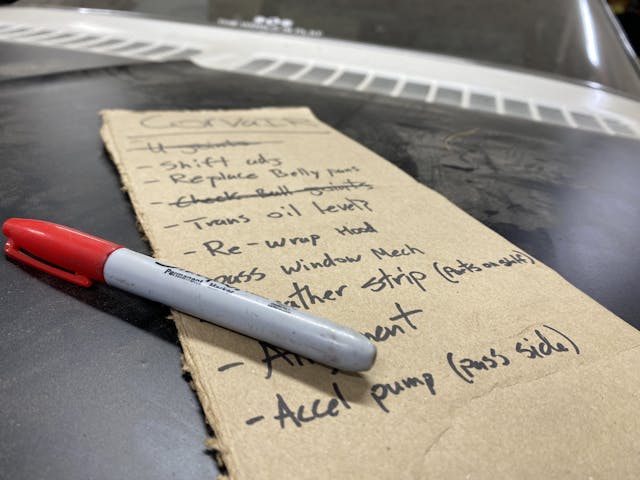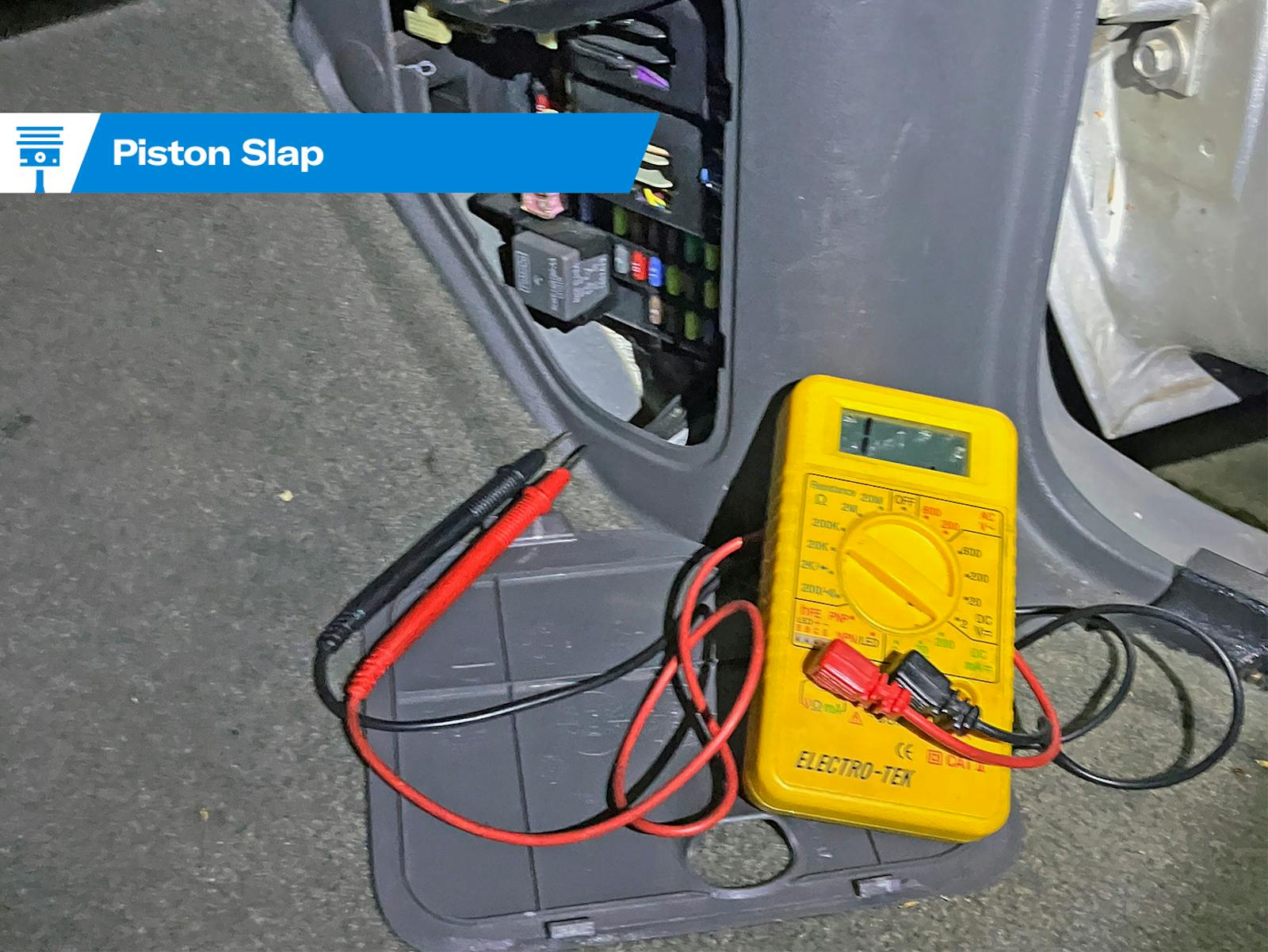5 to-do list tips to keep your projects on track
Talk to enough do-it-yourself car folks and you discover two camps of people: Those with a written list of what needs to be done, and those who are woefully unorganized. If there is one key to staying sane—and keeping to any type of budget—while tackling car and motorcycle projects, it is an iron-fisted grasp on what has been done and what needs to be done. The easiest way to do that is with a simple, hand-written to-do list. Of course, like everything else in the garage, there are a few ways to upgrade your project record-keeping to make life easier. Here are five ways I recommend.
Make it big

A dirty post-it note stuck to the wall behind your toolbox will work, but be honest—That note will disappear before you reference it three times. Set aside a dedicated space for tracking your work. This could be a small binder, notebook, or even a generous chunk of cardboard. The more durable, the better. I spent a few bucks and got a whiteboard and mounted it to the wall in the garage. It allows me to make notes quickly, know the status of each project at a glance, and even keep track of instructions or registrations with magnets.
Mark what needs money
Consider a system that lets you keep track of “need to purchase” items. On my whiteboard, I use a green marker to star any task that requires parts or a tool that I don’t yet have on hand. This way, I avoid forging ahead on a task only to be derailed immediately when I discover I don’t have the necessary parts. This strategy is also convenient when it’s time to place a parts order: You can glance at your to-do list, stock up on tools or components for multiple projects, and know that you are saving money on shipping charges.
Write your goal on top
To-do lists get very long, very fast, and even the most hardcore DIYer can get overwhelmed. To guard against this, put your end goal at the top of the list. For me, that long-term objective is usually an event or gathering to which I want to take the car (or bike). Underneath that is everything that needs to be done to get me there. This strategy also helps when I find myself adding tasks to the list—I can look up at the goal, ask myself whether those additional to-dos are necessary to achieve it, and prioritize quickly.
Break it down, then break it down again

Be detailed. If you’re juggling multiple projects, leaving one alone for a bit and giving attention to another in quick sequence, you’ll need to know where you left off on each one. Don’t write “fix carb,” when you could write set “set float height and clean jets.” This sets you up for success twice over, because recording any previous troubleshooting keeps you from wasting time repeating the investigation. I promise: That little tidbit you told yourself you would remember will be long-gone from your brain when you return to the project.
Make a quick-hit list
Free time is rare for all of us, so it’s best to be prepared to capitalize on an unexpectedly free 15 minutes or a one-hour hole in your schedule. Highlight projects you know you can tackle in a small timeframe. If you don’t have any simple or quick jobs, I usually recommend taking any newly found time to clean and sort. Organizing is one item that is always on a to-do list and never gets crossed off.
What other project organization tips do you have? Leave them in the Hagerty Community below.


